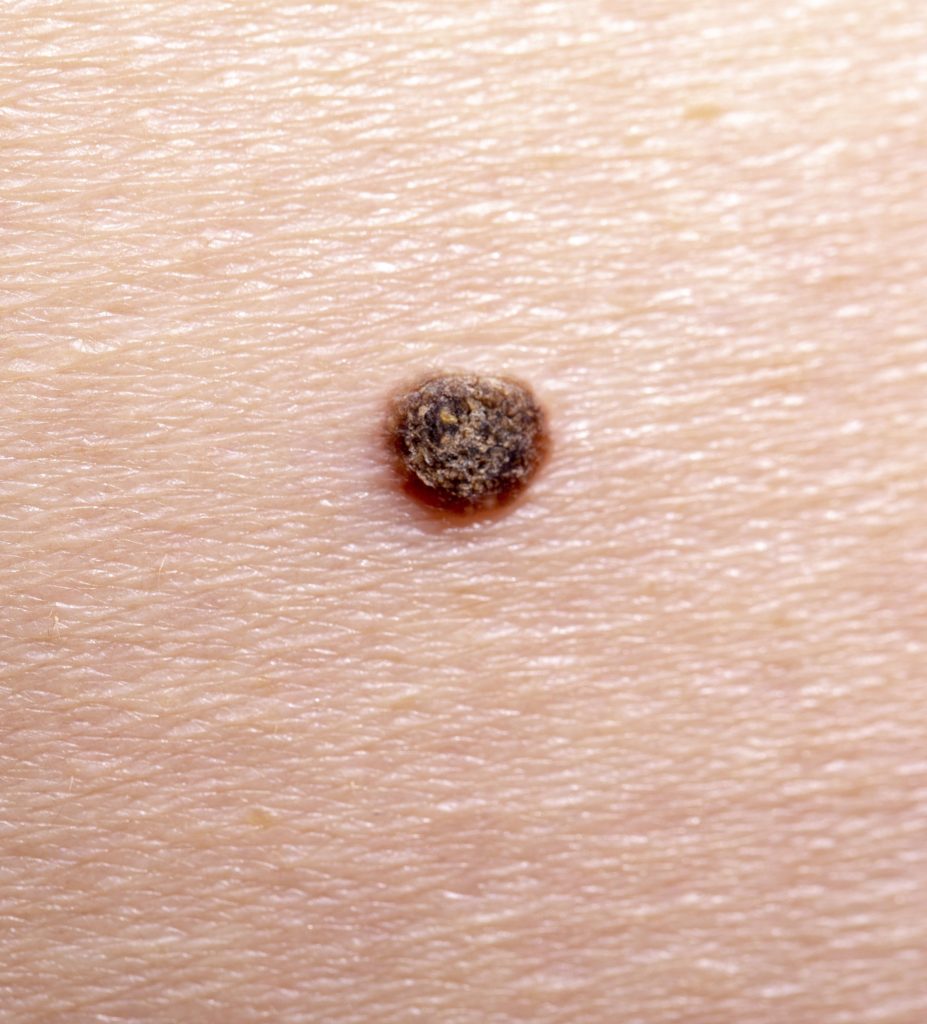What Is Melanoma?
Melanoma is a skin cancer that arises from a skin cell called a melanocyte, which makes the pigment (melanin) that gives your skin its color. Melanoma appears most commonly as a new spot on the skin or arises from a pre-existing nevus (mole) that changes in color, shape, or size. Melanoma is generally very treatable if found early; however, if not detected early enough, it can metastasize (spread). This is why Annual Cancer Screenings are important for “early detection, early cure.”*
What Are the Signs and Symptoms of Melanoma?
Distinguishing between a cancerous and a normal mole can be challenging, which is another reason to have Annual Skin Cancer Screenings. This is why any new skin spot, or one that changes, should be seen by a dermatologist like Dr. Wechsler.
A non-inclusive list of melanoma signs and symptoms includes:
- A spot on the skin that does not heal
- Bleeding or oozing from a mole
- Change in the surface of a mole, like a lump or bump
- Spread of pigment from the border of a mole into the surrounding skin
- Redness or swelling surrounding a mole
What Are the Warning Signs?
A is for Asymmetry – Most melanomas are asymmetrical. If you draw a line through the middle of the lesion, the two halves don’t match, so it looks different from a round to oval and symmetrical common mole.
B is for Border – Melanoma borders tend to be uneven and may have scalloped or notched edges, while common moles tend to have smoother, more even borders.
C is for Color – Multiple colors are a warning sign. While benign moles are usually a single shade of brown, a melanoma may have different shades of brown, tan or black. As it grows, the colors red, white or blue may also appear.
D is for Diameter or Dark – While it’s ideal to detect a melanoma when it is small, it’s a warning sign if a lesion is the size of a pencil eraser (about 6 mm, or ¼ inch in diameter) or larger. Some experts say it is also important to look for any lesion, no matter what size, that is darker than others. Rare, amelanotic melanomas are colorless.
E is for Evolving – Any change in size, shape, color or elevation of a spot on your skin, or any new symptom in it, such as bleeding, itching or crusting, may be a warning sign of melanoma.
If you notice these warning signs, or anything NEW, CHANGING or UNUSUAL on your skin, schedule a consultation with Dr. Wechsler promptly.

What Are the Risk Factors for Melanoma?
Melanoma can affect anybody. It develops when DNA changes occur within melanocytes. These DNA changes cause once normal, healthy skin cells to turn into cancer cells that grow uncontrollably. Ultraviolet (UV) radiation from natural or artificial sources, including tanning beds and sun lamps, is a major cause of melanoma, as UV rays can directly damage the DNA within skin cells. In addition to UV exposure, other risk factors that increase your risk for developing melanoma include:
- Having fair skin, naturally red or blond hair, and/or blue or green eyes
- A family or personal history of melanoma
- Having a large number of moles
- Older age
- A history of sunburns
- Having a disease or taking a medication that weakens your immune system
Melanoma Treatment on UES
We treat a full range of skin conditions and address your overall well-being. If you have or think you may have melanoma, we have a number of safe treatment options to treat you. To schedule a consultation, contact us at 212-396-2500 or via email at info@dramywechsler.com.

